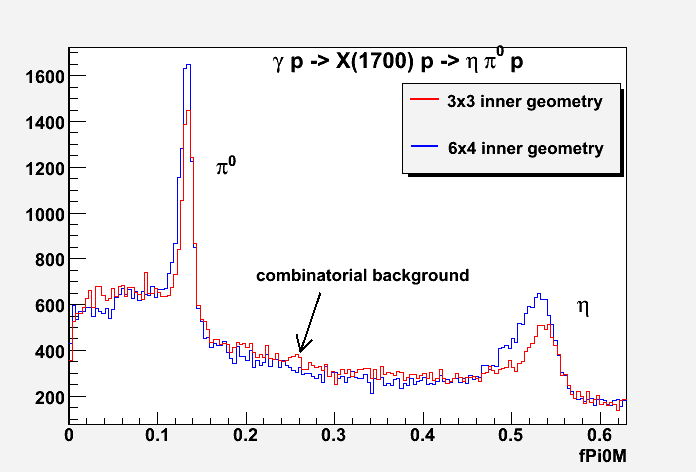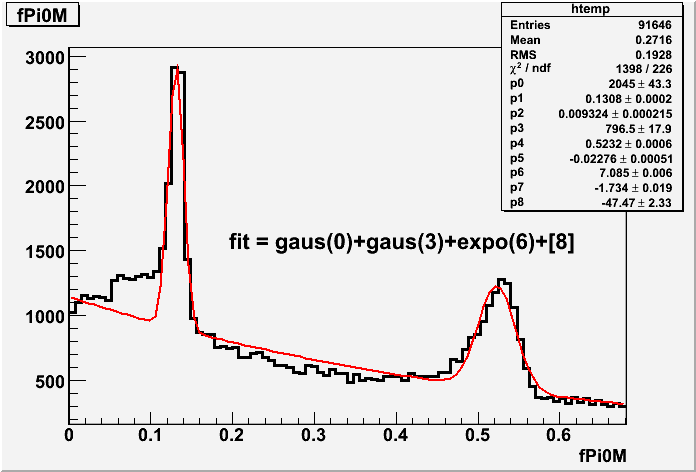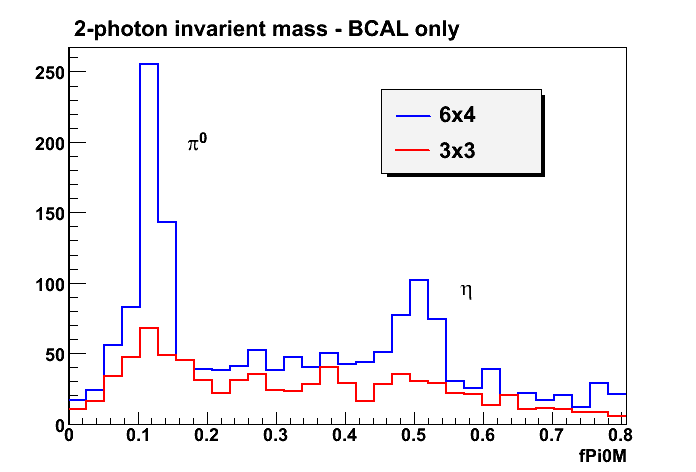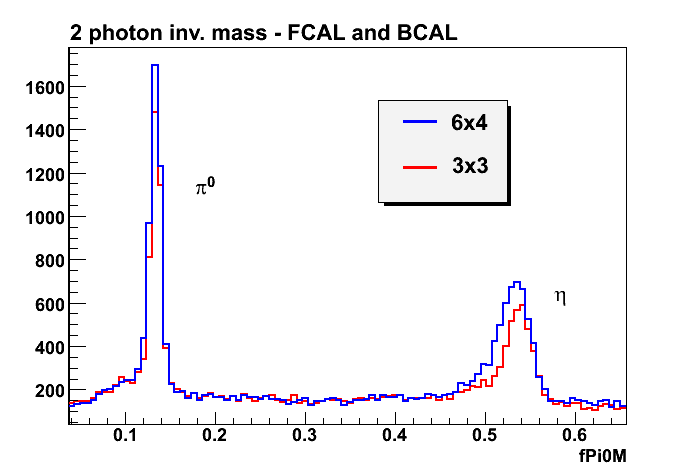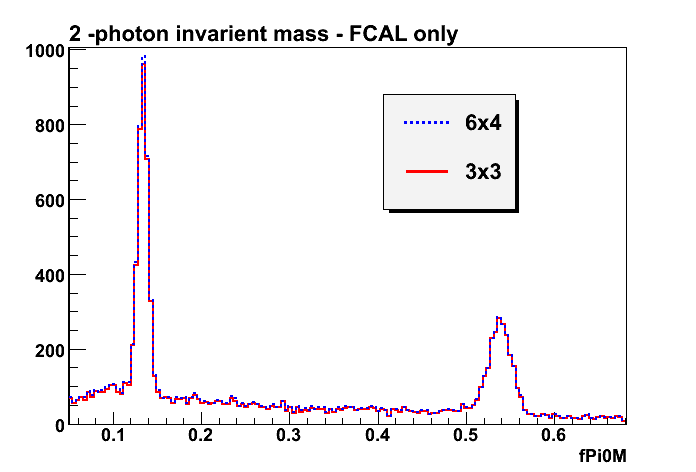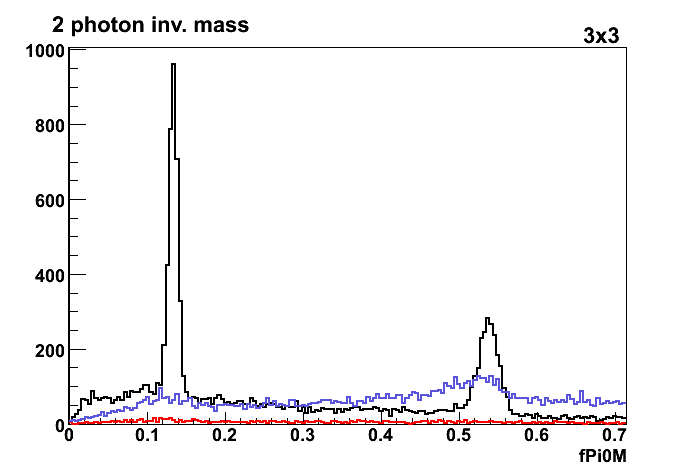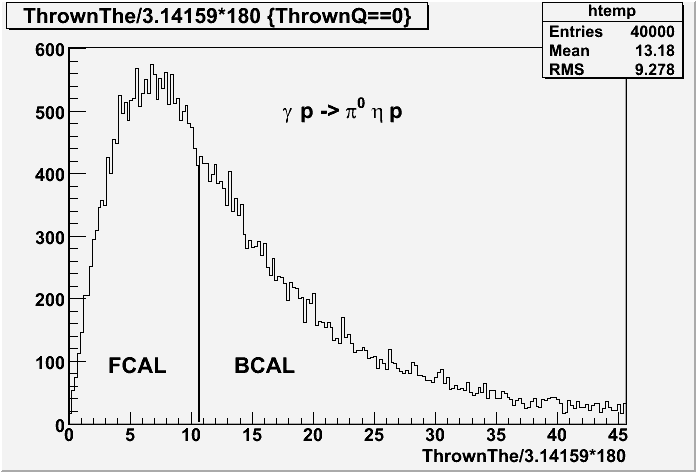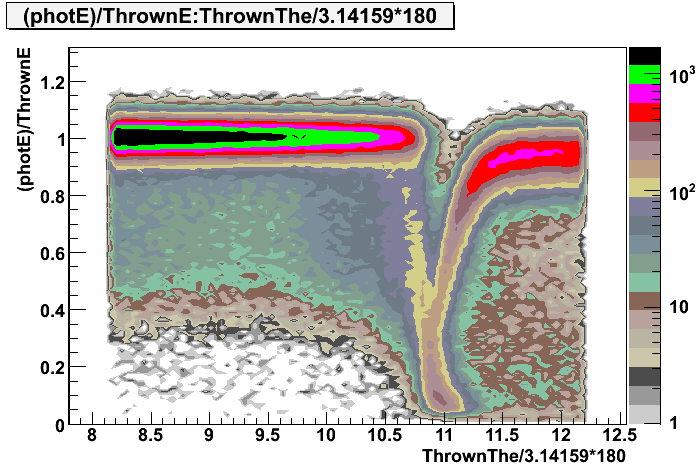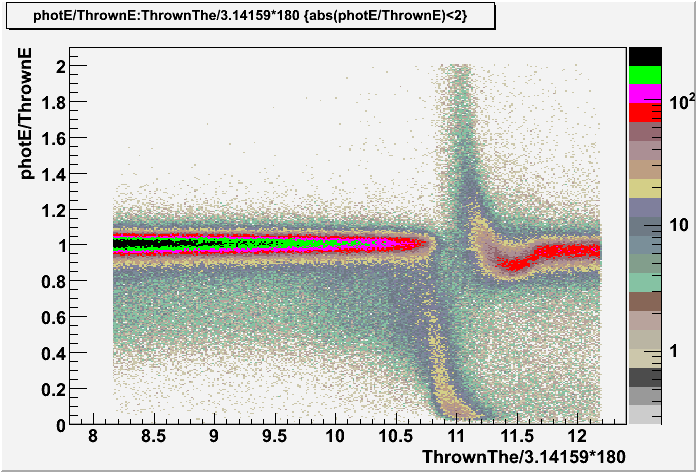Resolution studies
Contents
November 24,2008
Production:
Pi0's and etas are simulated in the GlueX detector using the full HDGeant simulation that is currently (November 2008) in the SVN repository. The isobar resonance decay X(1700) is simulated using genr8 which produces the kinematics of the resonance decay and the subsequent pi0 and eta decays to photons. The 4-momenta of the decays are then used as inputs into the HDGeant simulation. HDGeant simulates the energy depostion and postion of the decay photons within the GlueX detector. The output of HDGeant is then analysed to reconstruct the pi0s and etas.
genr8 Input Card:
%%%%%%%%%%%%%%%%% Start Input Values %%%%%%%%%%%%%%%%%%%%
%beamp.x beamp.y beamp.z beamMass
0 0 9 0
%targetp.x targetp.y targetp.z targetMass
0 0 0 0.938
%t-channelSlope
5.0
%number of particles needed to describe the isobar decay of X
8
%particle# 0&1 are always the X&Y
%baryon (Y) decay
%part# chld1# chld2# parent# Id nchild mass width charge flag
0 * * * 14 0 0.938 0 +1 11
%meson (X) decay
1 2 3 * 0 2 1.7 0.3 0 00
2 4 5 1 17 2 0.540 0 0 01
3 6 7 1 7 2 0.135 0 0 01
4 * * 2 1 0 0.0 0 0 11
5 * * 2 1 0 0.0 0 0 11
6 * * 3 1 0 0.0 0 0 11
7 * * 3 1 0 0.0 0 0 11
!EOI
%%%%%%%%%%%%%%%%%%%%% End Input Values %%%%%%%%%%%%%%%%%%%%%%%
% for narrow widths particles(stable to strong interactions)
% set width to zero (i.e. eta, pi's).
%
%flag 00 =isobar or resonace
%flag 01 = production particle that decays i.e. eta, pizero ..
%flag 11 = production particle that does not decay i.e. piplus,...
%flag 10 = final state particle not in production i.e. gamma
What this then produces is #gamma p -> X(1700) p -> eta pi0 p -> 4#gamma p. The analysis code is meant to reconstruct the pi0s and etas from the decay photons in the BCAL and FCAL calorimeters.
2-photons invariant mass. No cuts:
The smaller peaks in the 3x3 geometry seem to indicate a lower efficiency for reconstruction compared to the 6x4 inner geometry which seems to shift the peak to a higher value.
The fit is to the 6x4 geometry spectra.
December 8, 2008
After suppressing the protons and making cuts on which detector the pion decay photons were detected in we end up with:
Above: 2 photons in the BCAL. The 3x3 geometry does a poor job of reconstructing photons from the pi0-eta decay.
Above: One photon each in the BCAL and FCAL
Above: 2 photons in the FCAL.
Overlaying the spectra for each of the detector cuts we see:
and
December 22, 2008
Recalibration of the end of the BCAL
Theta distribution for thrown photons from pi0-eta decays.
Reconstructed photon energy as a fraction of the thrown photon energy for single thrown photons distributed evenly in theta. The end of the BCAL performs poorly. Needs to be improved!
Still needs improvement.
